Potrebujeme váš súhlas na využitie jednotlivých dát, aby sa vám okrem iného mohli ukazovať informácie týkajúce sa vašich záujmov. Súhlas udelíte kliknutím na tlačidlo „OK“.
ASTM D664-11a
Standard Test Method for Acid Number of Petroleum Products by Potentiometric Titration (Includes all amendments And changes 9/2/2016).
Automaticky preložený názov:
Štandardná skúšobná metóda pre Acid Počet ropných produktov potenciometrickej titrácie
NORMA vydaná dňa 15.7.2011
Informácie o norme:
Označenie normy: ASTM D664-11a
Poznámka: NEPLATNÁ
Dátum vydania normy: 15.7.2011
Kód tovaru: NS-35986
Počet strán: 10
Približná hmotnosť: 30 g (0.07 libier)
Krajina: Americká technická norma
Kategória: Technické normy ASTM
Kategórie - podobné normy:
Anotácia textu normy ASTM D664-11a :
Keywords:
acid number, B5, B10, B20, B100, biodiesel, biodiesel blend, lubricants, petroleum products, potentiometric, strong acid number, titration, Acid number--petroleum products, Lubricants (fluid), Neutralization numbers, ICS Number Code 75.080 (Petroleum products in general)
Doplňujúce informácie
| Significance and Use | ||||||||||||
|
New and used petroleum products, biodiesel and blends of biodiesel may contain acidic constituents that are present as additives or as degradation products formed during service, such as oxidation products. The relative amount of these materials can be determined by titrating with bases. The acid number is a measure of this amount of acidic substance in the oil, always under the conditions of the test. The acid number is used as a guide in the quality control of lubricating oil formulations. It is also sometimes used as a measure of lubricant degradation in service. Any condemning limits must be empirically established. Since a variety of oxidation products contribute to the acid number and the organic acids vary widely in corrosion properties, the test method cannot be used to predict corrosiveness of oil or biodiesel and blends under service conditions. No general correlation is known between acid number and the corrosive tendency of biodiesel and blends or oils toward metals. |
||||||||||||
| 1. Scope | ||||||||||||
|
1.1 This test method covers procedures for the determination of acidic constituents in petroleum products, lubricants, biodiesel and blends of biodiesel. 1.1.1 Test Method A—For petroleum products and lubricants soluble or nearly soluble in mixtures of toluene and propan-2-ol. It is applicable for the determination of acids whose dissociation constants in water are larger than 10-9; extremely weak acids whose dissociation constants are smaller than 10-9 do not interfere. Salts react if their hydrolysis constants are larger than 10-9. The range of acid numbers included in the precision statement is 0.1 mg/g KOH to 150 mg/g KOH. 1.1.2 Test Method B—Developed specifically for biodiesel and biodiesel blends with low acidity and slightly different solubility. This test method requires the use of an automatic titrator with automatic endpoint seeking capability. Note 1—In new and used oils, the constituents that may be considered to have acidic characteristics include organic and inorganic acids, esters, phenolic compounds, lactones, resins, salts of heavy metals, salts of ammonia and other weak bases, acid salts of polybasic acids, and addition agents such as inhibitors and detergents. 1.2 The test method may be used to indicate relative changes that occur in oil during use under oxidizing conditions regardless of the color or other properties of the resulting oil. Although the titration is made under definite equilibrium conditions, the test method is not intended to measure an absolute acidic property that can be used to predict performance of oil under service conditions. No general relationship between bearing corrosion and acid number is known. Note 2—The acid number obtained by this standard may or may not be numerically the same as that obtained in accordance with Test Methods D974 and D3339. There has not been any attempt to correlate this method with other non-titration methods. Note 3—A few laboratories have made the observation that there is a difference in Test Method D664 results when aqueous versus nonaqueous buffers are used. 1.3 The values stated in SI units are to be regarded as standard. No other units of measurement are included in this standard. 1.4 This standard does not purport to address all of the safety concerns, if any, associated with its use. It is the responsibility of the user of this standard to establish appropriate safety and health practices and determine the applicability of regulatory limitations prior to use. |
||||||||||||
| 2. Referenced Documents | ||||||||||||
|
Podobné normy:
Historická
15.6.2013
Historická
1.10.2011
Historická
1.12.2012
Historická
1.2.2013
Historická
15.7.2013
Historická
1.11.2012
Odporúčame:
Aktualizácia zákonov
Chcete mať istotu o platnosti využívaných predpisov?
Ponúkame Vám riešenie, aby ste mohli používať stále platné (aktuálne) legislatívne predpisy
Chcete vedieť viac informácií ? Pozrite sa na túto stránku.


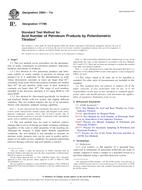
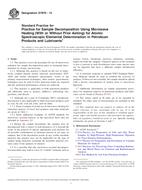 ASTM D7876-13
ASTM D7876-13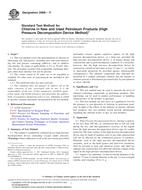 ASTM D808-11
ASTM D808-11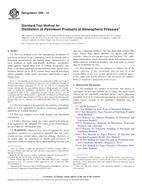 ASTM D86-12
ASTM D86-12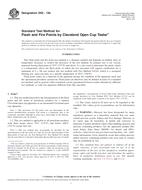 ASTM D92-12b
ASTM D92-12b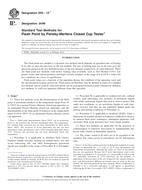 ASTM D93-13e1
ASTM D93-13e1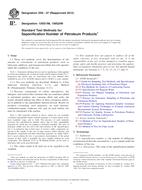 ASTM D94-07(2012)..
ASTM D94-07(2012)..
 Cookies
Cookies
